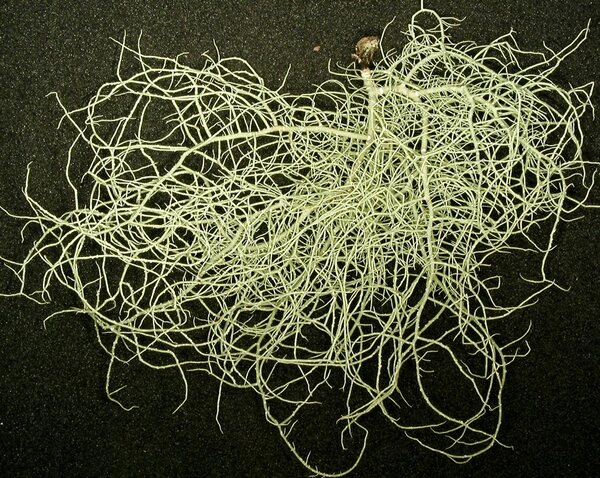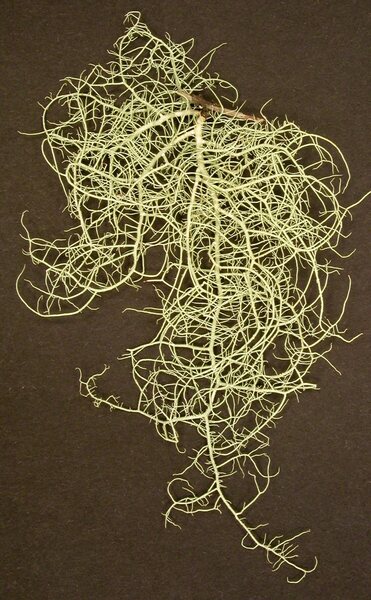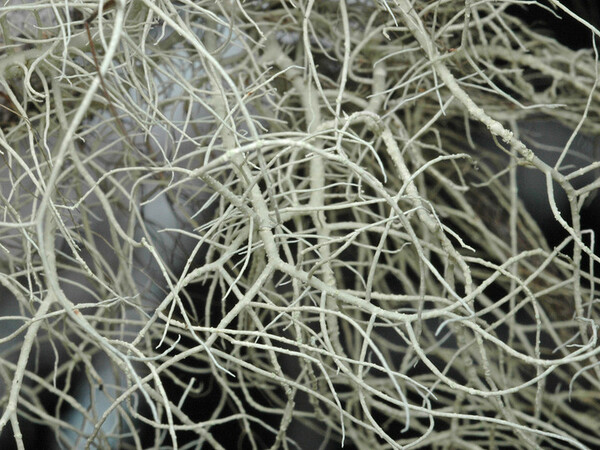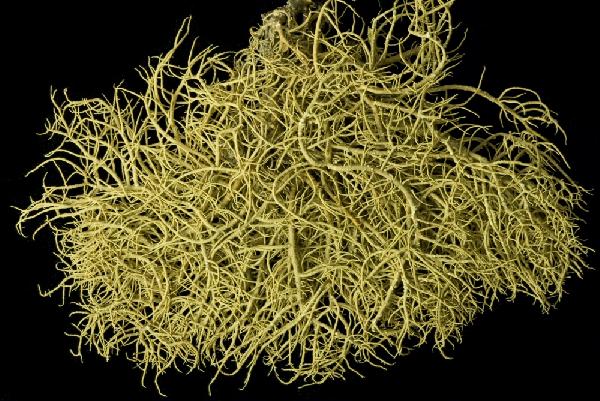Usnea glabrescens (Vain.) Räsänen
Vain. ex Räsänen, Luonnon Ystävä, 23: 9, 1919. Basionym: Usnea barbata var. glabrescens Nyl. ex Vain. - Meddeland. Soc. Fauna Fl. Fenn., 2: 46, 1878.
Synonyms: Usnea distincta Motyka nom. illegit.; Usnea extensa Vain.; Usnea glabrella (Motyka) Räsänen
Distribution: N - Ven (Nascimbene & al. 2006e, Nascimbene & Marini 2007), TAA (Caniglia & al. 2002, Nascimbene & Caniglia 2002c, Nascimbene & al. 2006e, 2007b, 2022, Nimis & al. 2015), Lomb (Alessio & al. 1995), Piem (TSB 33011), VA (Borlandelli & al. 1996, Piervittori & Isocrono 1997, 1999, Matteucci & al. 2008, Isocrono & al. 2008). C - Sar (Zedda 2002, 2002b, Cossu 2013). S - Pugl (Nimis & Tretiach 1999), Cal (CLU 18085).
Description: Thallus fruticose-filamentous, greenish, shrubby to subpendulous, stiff, up to 15(-25) cm long, branching mainly isotomic-dichotomously with divergent branches. Main branches cylindrical, tapering, without foveoles or transversal furrows, 0.7-1.2 mm thick, with numerous ramifications only close to the basal part and generally few ramifications in the distal parts, the base black, with distinct annular cracks and often with tiny, lenticular, longitudinally oriented cracks visible at high magnification. Lateral branches not constricted at attachment point, with thick apices. Papillae sparse and almost inapparent to numerous and verrucose; true tubercles absent; fibrils sparse and irregularly dispersed to numerous and with a fish-bone arrangement, slender, 3-7 mm long. Soralia mainly on secondary and terminal branches, bursting from low pustules (tubercle-like structures, but wider than high), at first punctiform, later becoming conspicuous, usually remaining circular and discrete, plane or concave, those of the terminal branches often deeply excavate and reaching the central axis, occupying more than half the diameter of the branch, originating from cortex; isidiomorphs rarely present in young soralia, up to 0.1 mm long. Cortex thick (8-13% of total branch thickness), matt in longitudinal section; medulla white, homogeneous, loose to compact, thin (15-23%); central axis white, rather thick (31-52%); ratio axis/medulla ranging between 1.2 and 5. Apothecia not observed in Italian material. Photobiont chlorococcoid. Spot tests and chemistry: cortex with usnic acid, K-, C-, P-; medulla with different chemotypes: 1) with norstictic and salazinic acids (K+ yellow turning red, P+ yellow to orange) as main compounds plus substances of the stictic acid complex and protocetraric acid (accessory), the most common chemotype in Italy; 2) with norstictic acid as main substance (K+ yellow turning red, P+ orange) plus substances of the stictic acid complex (accessories); 3) with psoromic acid (K- or K+ slowly yellowish, P+ deep yellow) and other accessory substances; 4) without medullary substances (K-, P-). Note: on bark and lignum in cold-humid but open situations in montane to subalpine forests. Note: on bark and lignum in cold-humid but open situations in montane to subalpine forests. The record from Puglia, as most of those from Southern Italy, requires confirmation. U. glabrescens s.lat. seems to be polyphyletic (see Mark & al. 2016), and needs further integrative studies.
Growth form: Fruticose filamentous
Substrata: bark and lignum
Photobiont: green algae other than Trentepohlia
Reproductive strategy: mainly asexual, by soredia, or soredia-like structures (e.g. blastidia)
Subcontinental: restricted to areas with a dry-subcontinental climate (e.g. dry Alpine valleys, parts of Mediterranean Italy)
Poorly known taxon in need of further study
Commonnes-rarity: (info)
Alpine belt: absent
Subalpine belt: rather rare
Oromediterranean belt: absent
Montane belt: very rare
Submediterranean belt: absent
Padanian area: absent
Humid submediterranean belt: absent
Humid mediterranean belt: absent
Dry mediterranean belt: absent
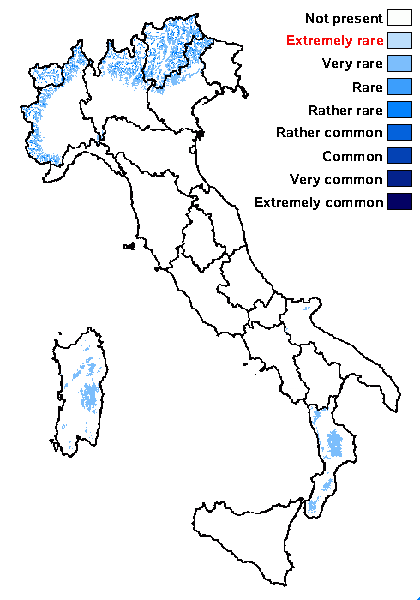
Predictive model
Herbarium samples

Tiiu Tõrra; Owner: Tiiu Tõrra - Institute of Ecology and Earth Sciences, University of Tartu, Estonia
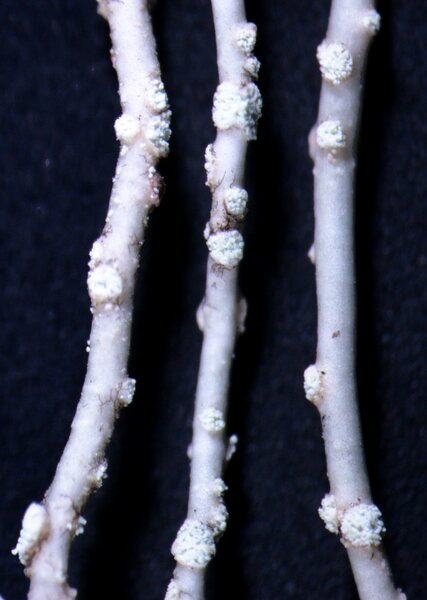
Tiiu Tõrra; Owner: University of Tartu
Estonia.
Herbarium: TU (32772)
2007/04/25
Rounded and discrete soralia of U. glabrescens
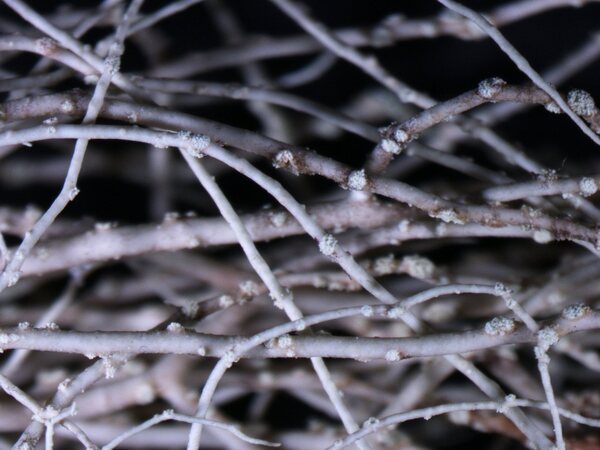
Tiiu Tõrra; Owner: University of Tartu
Estonia.
Herbarium: TU (32772)
2007/04/25
Branches of U. glabrescens
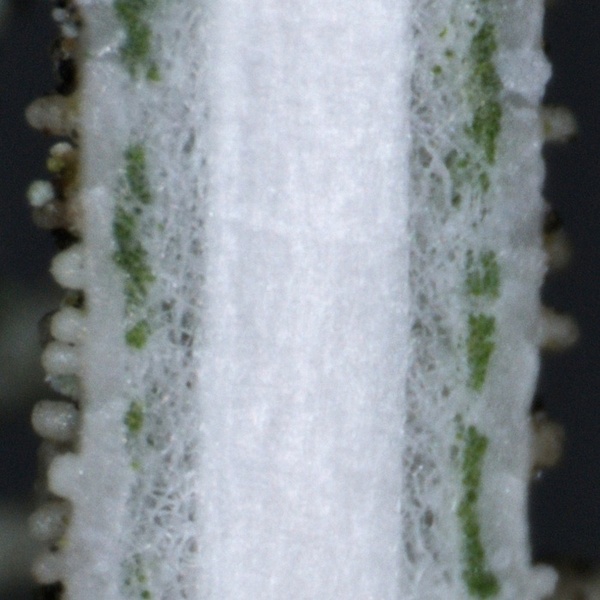
Tiiu Tõrra; Owner: Tiiu Tõrra - Institute of Ecology and Earth Sciences, University of Tartu, Estonia
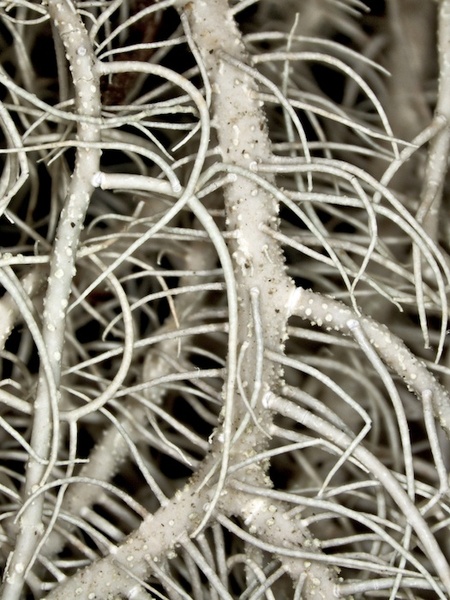
Tiiu Tõrra; Owner: Tiiu Tõrra - Institute of Ecology and Earth Sciences, University of Tartu, Estonia
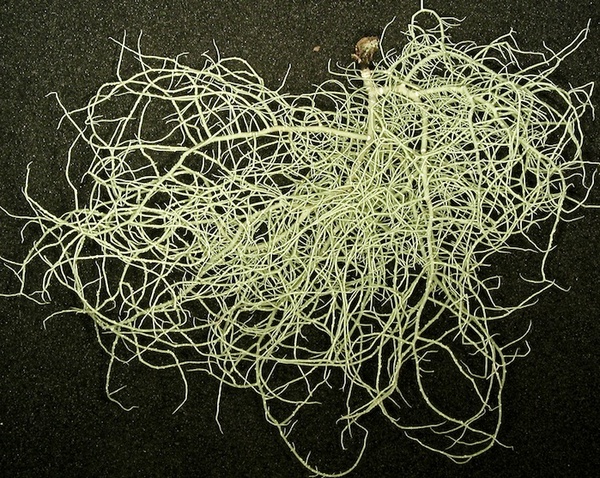
Tiiu Tõrra; Owner: Tiiu Tõrra - Institute of Ecology and Earth Sciences, University of Tartu, Estonia
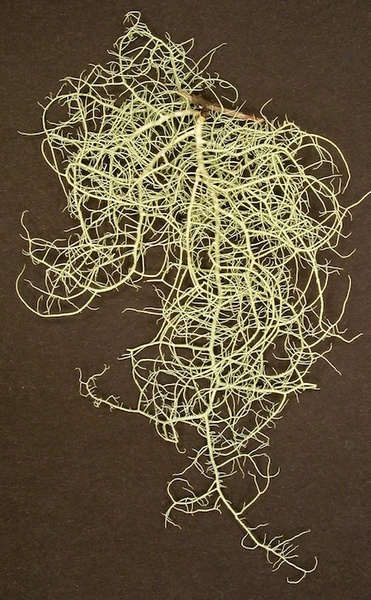
Tiiu Tõrra; Owner: Tiiu Tõrra - Institute of Ecology and Earth Sciences, University of Tartu, Estonia
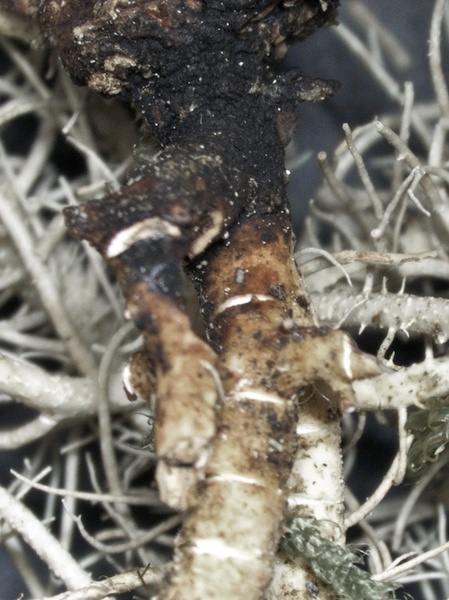
Tiiu Tõrra; Owner: Tiiu Tõrra - Institute of Ecology and Earth Sciences, University of Tartu, Estonia

Tiiu Tõrra; Owner: Tiiu Tõrra - Institute of Ecology and Earth Sciences, University of Tartu, Estonia
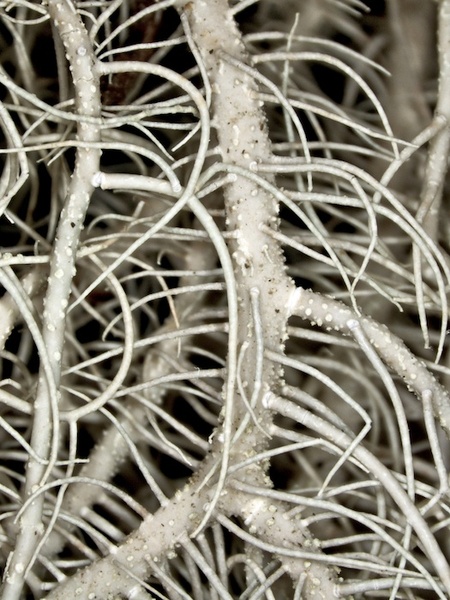
Tiiu Tõrra; Owner: Tiiu Tõrra - Institute of Ecology and Earth Sciences, University of Tartu, Estonia
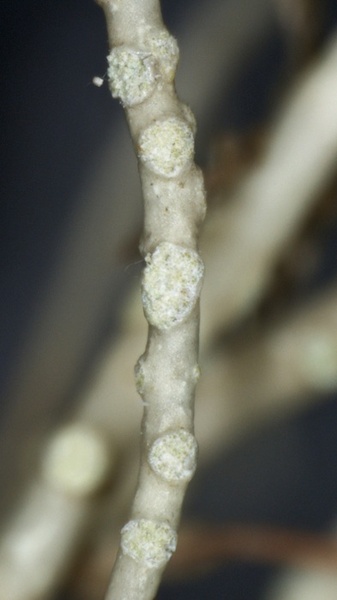
Tiiu Tõrra; Owner: Tiiu Tõrra - Institute of Ecology and Earth Sciences, University of Tartu, Estonia
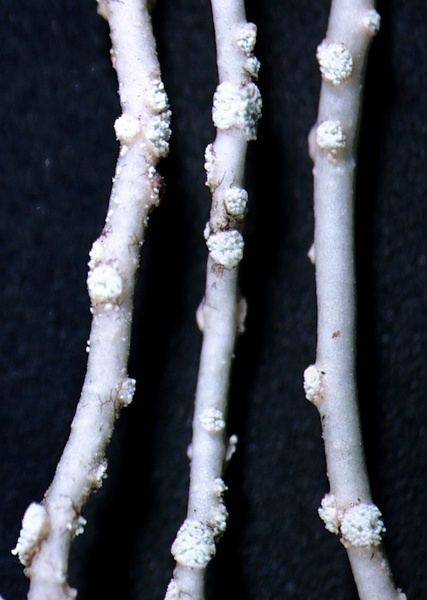
Tiiu Tõrra; Owner: Tiiu Tõrra - Institute of Ecology and Earth Sciences, University of Tartu, Estonia

Tiiu Tõrra; Owner: Tiiu Tõrra - Institute of Ecology and Earth Sciences, University of Tartu, Estonia
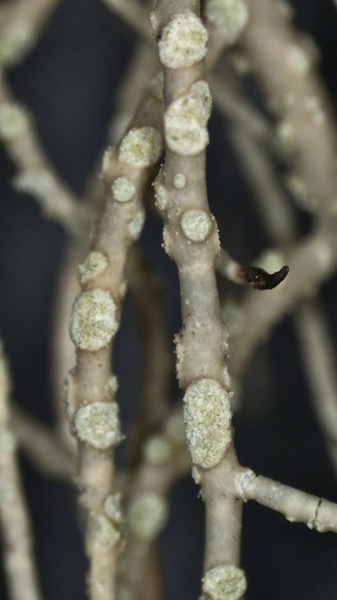
Tiiu Tõrra; Owner: Tiiu Tõrra - Institute of Ecology and Earth Sciences, University of Tartu, Estonia
Growth form: Fruticose filamentous
Substrata: bark and lignum
Photobiont: green algae other than Trentepohlia
Reproductive strategy: mainly asexual, by soredia, or soredia-like structures (e.g. blastidia)
Subcontinental: restricted to areas with a dry-subcontinental climate (e.g. dry Alpine valleys, parts of Mediterranean Italy)
Poorly known taxon in need of further study
Commonnes-rarity: (info)
Alpine belt: absent
Subalpine belt: rather rare
Oromediterranean belt: absent
Montane belt: very rare
Submediterranean belt: absent
Padanian area: absent
Humid submediterranean belt: absent
Humid mediterranean belt: absent
Dry mediterranean belt: absent

Predictive model
| Herbarium samples |

Tiiu Tõrra; Owner: Tiiu Tõrra - Institute of Ecology and Earth Sciences, University of Tartu, Estonia

Tiiu Tõrra; Owner: University of Tartu
Estonia.
Herbarium: TU (32772)
2007/04/25
Rounded and discrete soralia of U. glabrescens

Tiiu Tõrra; Owner: University of Tartu
Estonia.
Herbarium: TU (32772)
2007/04/25
Branches of U. glabrescens

Tiiu Tõrra; Owner: Tiiu Tõrra - Institute of Ecology and Earth Sciences, University of Tartu, Estonia

Tiiu Tõrra; Owner: Tiiu Tõrra - Institute of Ecology and Earth Sciences, University of Tartu, Estonia

Tiiu Tõrra; Owner: Tiiu Tõrra - Institute of Ecology and Earth Sciences, University of Tartu, Estonia

Tiiu Tõrra; Owner: Tiiu Tõrra - Institute of Ecology and Earth Sciences, University of Tartu, Estonia

Tiiu Tõrra; Owner: Tiiu Tõrra - Institute of Ecology and Earth Sciences, University of Tartu, Estonia

Tiiu Tõrra; Owner: Tiiu Tõrra - Institute of Ecology and Earth Sciences, University of Tartu, Estonia

Tiiu Tõrra; Owner: Tiiu Tõrra - Institute of Ecology and Earth Sciences, University of Tartu, Estonia

Tiiu Tõrra; Owner: Tiiu Tõrra - Institute of Ecology and Earth Sciences, University of Tartu, Estonia

Tiiu Tõrra; Owner: Tiiu Tõrra - Institute of Ecology and Earth Sciences, University of Tartu, Estonia

Tiiu Tõrra; Owner: Tiiu Tõrra - Institute of Ecology and Earth Sciences, University of Tartu, Estonia

 DOLICHENS
DOLICHENS
